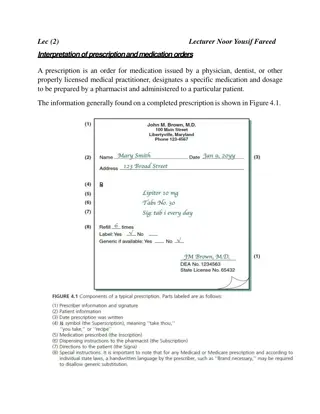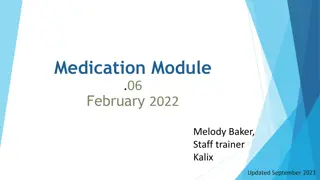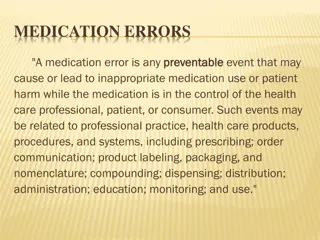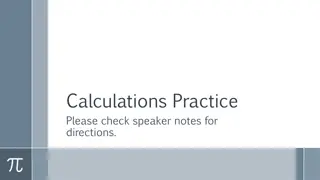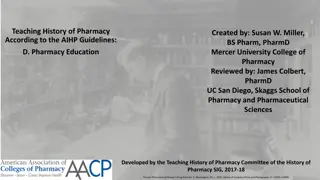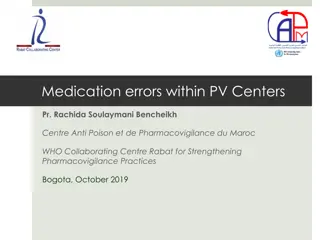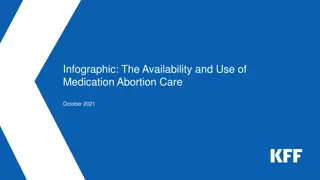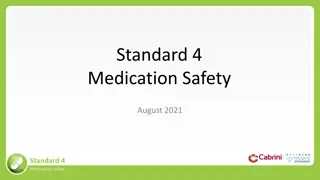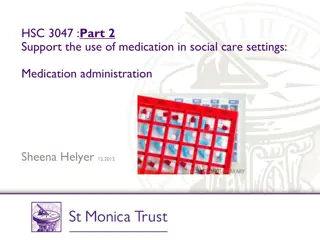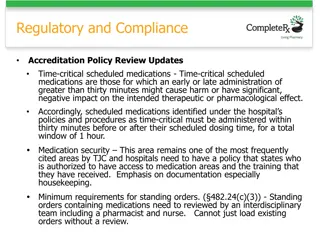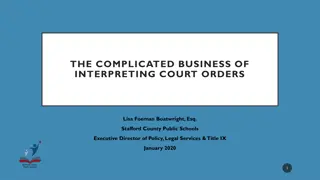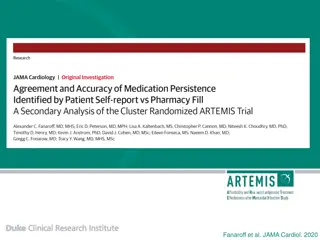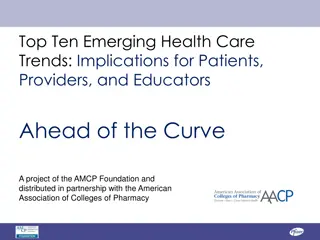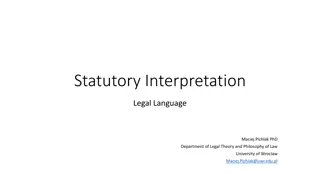Principles of Pharmacy Practice: Interpretation of Prescriptions & Medication Orders
Understand the essential components of a prescription, the importance of accurate interpretation, and the distinctions between prescriptions and medication orders. Learn about prescriber information, patient details, medication prescribed, dispensing instructions, directions to the patient, and special pharmacist instructions. Explore the necessity of including patient information such as age, body surface area (BSA), and weight in certain prescriptions, along with the diverse categories of prescriptions based on compounding and admixture. Gain insights into the nuances of prescription writing and the significance of clear communication in pharmacy practice, ensuring optimal patient care.
Download Presentation

Please find below an Image/Link to download the presentation.
The content on the website is provided AS IS for your information and personal use only. It may not be sold, licensed, or shared on other websites without obtaining consent from the author. Download presentation by click this link. If you encounter any issues during the download, it is possible that the publisher has removed the file from their server.
E N D
Presentation Transcript
Principles of pharmacy practice Lec 1 Lecturer Dr Athmar Dhahir Habeeb Al-Shohani PhD in industrial pharmacy and pharmaceutical formulations athmar1978@uomustansiriyah.edu.iq athmar1978@yahoo.com athmar.habeeb.12@ucl.ac.uk
Interpretation of Prescriptions and Medication Orders Prescription is an order for medication issued by a physician, dentist ,or other properly licensed medical practitioner. A prescription designates a specific medication and dosage to be prepared administered to a particular patient. A prescription is usually written on preprinted forms containing the traditional symbol (meaning recipe, take thou, or you take ), name, address, telephone number, and other pertinent information regarding the physician or other prescriber. In addition, blank spaces are used by the prescriber to provide information about the patient, the medication desired, and the directions for use. by a pharmacist and
Components of a typical prescription (1) Prescriber information and signature (2) Patient information (3) Date prescription was written (4) symbol (the Superscription), meaning take thou, you take, or recipe (5) Medication prescribed (the Inscription) (6) Dispensing instructions Subscription) (7) Directions to the patient (the Signa) (8) Special instructions. to the pharmacist (the It is important to note that for any Medicated or Medicare prescription and according to individual state laws, a handwritten language by the prescriber, such as Brand necessary, may be required substitution. to disallow generic
In hospitals and other institutions, the forms are somewhat different and are referred to as medication orders. The orders shown in this example are typed; typically, instructions are written by the physician in ink these
A prescription or medication order for an infant, child, or an elderly person may also include the and/or body (BSA) of the patient This information is sometimes necessary in calculating the appropriate dosage. age, surface weight, area medication
It is important two to recognize categories prescriptions: (1) those compounding admixture pharmacist A prescription include the chemical or non proprietary (generic) name of the substance or the manufacturer s brand or trademark name broad of not requiring or the by may
(2) those requiring compounding Prescriptions compounding contain the quantities ingredient required requiring of each
The quantities of ingredients to be used almost always are expressed in SI metric units of weight and measurement. In rare instances, units of the apothecaries system may be used. In the use of the SI(metric system),the decimal point may be replaced by a vertical line that is imprinted on the prescription blank or hand drawn by the prescriber. In these instances, whole or subunits of grams of weight and milliliters of volume are separated by the vertical line. Sometimes the abbreviations g (for gram) and mL (for milliliter) are absent and must be presumed.
e-prescriptions The use of electronic means for the generation and transmission of prescriptions is accepted throughout the United States. In the inpatient or outpatient setting, a medication order, for a patient is entered into an automated data entry system (PC)or a handheld device loaded with e-prescribing software and sent to a pharmacy as an e-prescription. When received, a pharmacist immediately reduces the order to a hard copy and or stores it as a computer file. Among the advantages cited fore e prescriptions over traditional paper prescriptions are: 1. reduced errors due to prescription legibility; 2. concurrent software screens for drug interactions; 3. reduced incidence of altered or forged prescriptions; 4. efficiency for both prescriber and pharmacist; 5. convenience to the patient, whose prescription would likely be ready for pick-up upon arrival at the pharmacy



